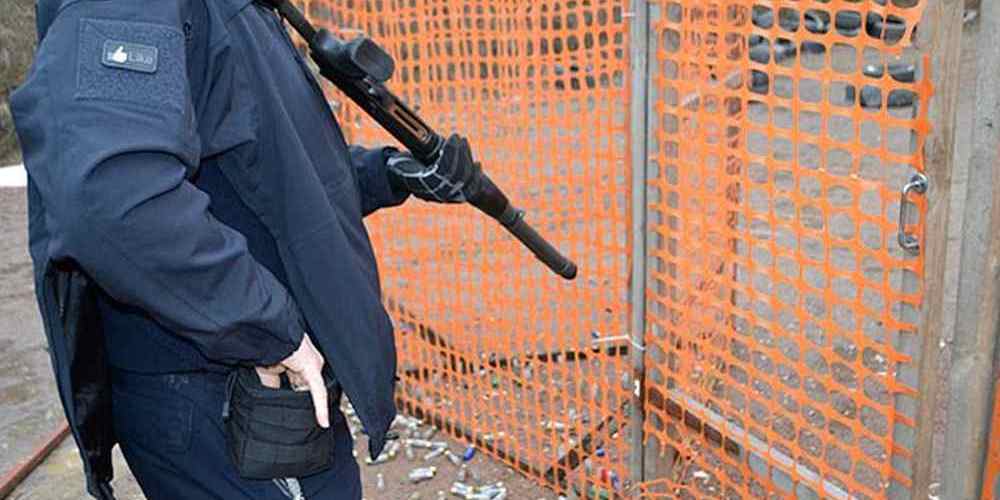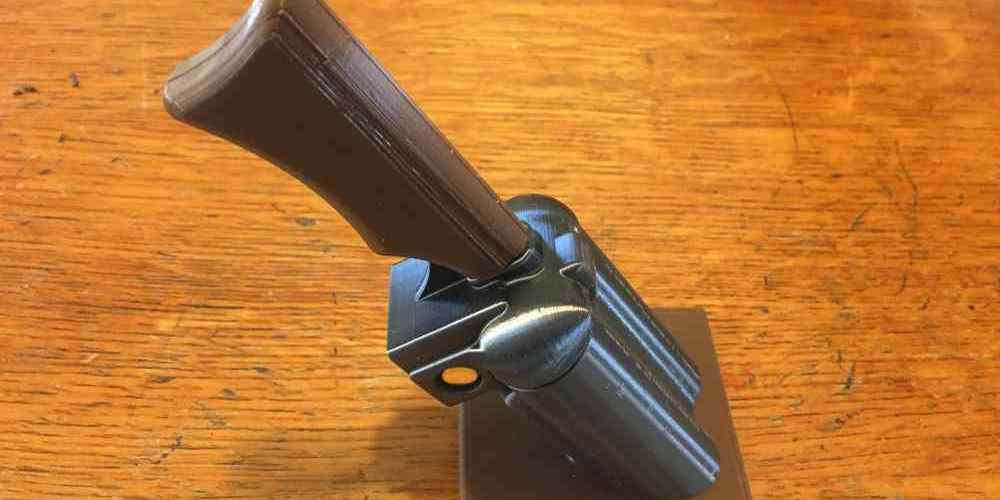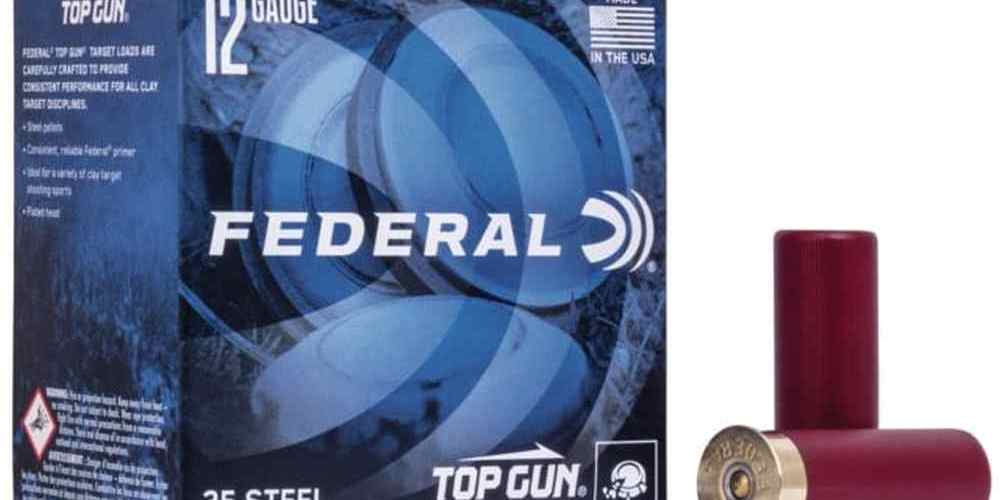“Break more clays with these shotgun ammunition tips for clay pigeon shooting.”
Selecting the Right Shotgun Ammunition for Clay Pigeon Shooting
Clay pigeon shooting, also known as clay target shooting, is a popular sport that involves shooting at flying clay targets with a shotgun. It requires skill, precision, and the right equipment to succeed. One crucial aspect of clay pigeon shooting is selecting the right shotgun ammunition. Choosing the correct ammunition can greatly impact your performance and overall experience on the shooting range.
When it comes to selecting shotgun ammunition for clay pigeon shooting, there are a few key factors to consider. The first consideration is the gauge of the shotgun. The most common gauges used for clay pigeon shooting are 12 gauge and 20 gauge. The 12 gauge is the most popular choice among shooters due to its versatility and availability of ammunition. However, the 20 gauge is a good option for those who prefer a lighter recoil and easier handling.
Another important factor to consider when selecting shotgun ammunition for clay pigeon shooting is the shot size. Shot size refers to the size of the individual pellets in the shotgun shell. For clay pigeon shooting, it is recommended to use smaller shot sizes such as #7.5 or #8. These smaller shot sizes provide a denser pattern and are less likely to damage the clay targets.
In addition to gauge and shot size, the type of shotgun shell is also an important consideration. There are two main types of shotgun shells: lead and steel. Lead shotgun shells are the traditional choice for clay pigeon shooting and are widely available. However, some shooting ranges may require the use of steel shotgun shells to comply with environmental regulations. It is important to check with the shooting range before selecting your ammunition.
When it comes to selecting the right shotgun ammunition for clay pigeon shooting, it is essential to consider your shooting style and preferences. Some shooters may prefer a lighter load for reduced recoil, while others may opt for a heavier load for increased velocity and range. Experimenting with different types of shotgun ammunition can help you find the perfect balance between performance and comfort.
Transitioning from selecting the right shotgun ammunition to actually using it on the shooting range, there are a few tips to keep in mind. First and foremost, always follow safety guidelines and regulations when handling firearms. Proper gun safety is paramount in any shooting sport, including clay pigeon shooting.
Once you are on the shooting range, it is important to focus on your shooting technique. Proper stance, grip, and follow-through are essential for hitting the clay targets consistently. Practice regularly to improve your accuracy and precision.
In conclusion, selecting the right shotgun ammunition for clay pigeon shooting is a crucial step in ensuring a successful and enjoyable shooting experience. Consider factors such as gauge, shot size, and type of shotgun shell when choosing your ammunition. Experiment with different types of ammunition to find what works best for you. Remember to always prioritize safety and practice good shooting technique. With the right ammunition and skills, you can break clays with confidence and precision. Happy shooting!

Understanding Different Types of Shotgun Shells for Breaking Clays
When it comes to clay pigeon shooting, having the right shotgun ammunition can make all the difference in breaking those clays. Understanding the different types of shotgun shells available can help you choose the best option for your shooting needs. In this article, we will explore the various types of shotgun shells commonly used for clay pigeon shooting and provide tips on selecting the right ammunition for your next shooting session.
One of the most popular types of shotgun shells for clay pigeon shooting is the target load. Target loads are typically lighter in weight and have less recoil, making them ideal for shooting clay pigeons. These shells are often loaded with smaller shot sizes, such as #7.5 or #8, which provide a dense pattern for breaking clays at a distance. Target loads are also affordable and readily available, making them a great option for beginners and experienced shooters alike.
Another type of shotgun shell commonly used for clay pigeon shooting is the trap load. Trap loads are specifically designed for shooting trap and skeet targets, which are typically thrown at longer distances than sporting clays. These shells are loaded with heavier shot sizes, such as #7 or #7.5, to provide the necessary power and range to break targets at a distance. Trap loads also have a higher velocity than target loads, making them a popular choice for competitive shooters looking to improve their scores.
For shooters looking for a more versatile option, field loads are a great choice for clay pigeon shooting. Field loads are designed for hunting upland game birds, such as pheasants and quail, but can also be used for shooting clay pigeons. These shells are typically loaded with medium-sized shot sizes, such as #6 or #7, which provide a good balance of power and range for breaking clays. Field loads are also available in a variety of shot weights and velocities, allowing shooters to customize their ammunition to suit their shooting style and preferences.
When selecting shotgun ammunition for clay pigeon shooting, it is important to consider the choke of your shotgun. Chokes are devices that are installed at the end of the barrel and help control the spread of shot when fired. For shooting clay pigeons, a modified or improved cylinder choke is typically recommended, as these chokes provide a good balance of shot density and spread for breaking clays at various distances. It is also important to match the shot size of your ammunition to the choke of your shotgun to ensure optimal performance and accuracy.
In conclusion, understanding the different types of shotgun shells available for clay pigeon shooting can help you choose the best ammunition for breaking clays. Whether you prefer target loads for their light weight and low recoil, trap loads for their power and range, or field loads for their versatility, there is a shotgun shell out there to suit your shooting needs. By selecting the right ammunition and matching it to the choke of your shotgun, you can improve your accuracy and performance on the shooting range. So load up your shotgun, take aim, and break those clays with confidence!
Tips for Improving Accuracy and Consistency in Clay Pigeon Shooting
Clay pigeon shooting, also known as clay target shooting, is a popular sport that requires skill, precision, and focus. Whether you are a beginner or a seasoned shooter, improving your accuracy and consistency is key to success in this challenging sport. One important factor that can greatly impact your performance is the type of shotgun ammunition you use. In this article, we will discuss some tips for selecting the right shotgun ammunition to help you break more clays and improve your overall shooting experience.
When it comes to clay pigeon shooting, consistency is key. Using the same type of shotgun ammunition for every round of shooting can help you develop muscle memory and improve your accuracy over time. It is important to find a load that works well for you and stick with it. Experimenting with different loads can be helpful in finding the right one for your shooting style, but once you find a load that works, it is best to stick with it to maintain consistency in your shooting.
Another important factor to consider when selecting shotgun ammunition for clay pigeon shooting is the shot size. The shot size refers to the size of the pellets in the shell, with smaller shot sizes having more pellets and larger shot sizes having fewer pellets. In general, smaller shot sizes are better for shooting clays, as they provide a denser pattern and are more likely to break the clay target. Popular shot sizes for clay pigeon shooting include #7.5, #8, and #9.
In addition to shot size, the shot weight is also an important factor to consider when selecting shotgun ammunition for clay pigeon shooting. The shot weight refers to the amount of shot in the shell, with heavier shot weights providing more power and velocity. Heavier shot weights are generally better for longer shots, while lighter shot weights are better for shorter shots. It is important to find a shot weight that works well for the distances you will be shooting at and adjust accordingly.
When it comes to selecting shotgun ammunition for clay pigeon shooting, it is also important to consider the type of shell. There are two main types of shotgun shells: target loads and game loads. Target loads are specifically designed for shooting clays and provide consistent patterns and reduced recoil, making them ideal for clay pigeon shooting. Game loads, on the other hand, are designed for hunting and may not provide the same level of consistency and performance as target loads. It is best to use target loads for clay pigeon shooting to ensure the best possible performance.
In conclusion, selecting the right shotgun ammunition is crucial for improving your accuracy and consistency in clay pigeon shooting. By finding a load that works well for you, sticking with it, and considering factors such as shot size, shot weight, and shell type, you can greatly improve your shooting performance and break more clays. Remember to practice regularly and stay focused on your technique to continue improving your skills in this challenging and rewarding sport. Happy shooting!
How to Choose the Best Choke for Breaking Clays
When it comes to clay pigeon shooting, choosing the right shotgun ammunition is crucial for hitting your target. One important factor to consider is the choke of your shotgun. The choke determines how tightly the pellets are grouped when they leave the barrel, affecting the spread of your shot. In this article, we will discuss how to choose the best choke for breaking clays.
First and foremost, it’s important to understand the different types of chokes available for shotguns. There are several common chokes, including cylinder, improved cylinder, modified, improved modified, and full choke. Each choke has a different constriction, which affects the spread of the shot pattern.
For clay pigeon shooting, a modified choke is often recommended. This choke provides a good balance between a tight shot pattern and enough spread to hit moving targets. It is versatile enough to be used for both close-range and medium-range shots, making it a popular choice among clay shooters.
If you are shooting at longer distances, you may want to consider using a full choke. This choke has the tightest constriction, resulting in a very focused shot pattern. While this can be beneficial for hitting targets at a distance, it may be too tight for closer shots.
On the other hand, if you are shooting at close range, a cylinder or improved cylinder choke may be more suitable. These chokes have less constriction, allowing for a wider shot pattern that is better suited for close-range shooting.
When choosing a choke for clay pigeon shooting, it’s important to consider the type of targets you will be shooting at. If you are shooting at fast-moving targets, such as crossing or incoming clays, a tighter choke may be more effective. However, if you are shooting at slower-moving targets, such as outgoing clays, a more open choke may be preferable.
It’s also important to consider the size of the shot you will be using. Different chokes may perform differently with different sizes of shot. For example, a modified choke may work well with #7.5 or #8 shot, while a full choke may be better suited for #6 or #7 shot.
Ultimately, the best way to determine the right choke for breaking clays is through trial and error. Take the time to experiment with different chokes and shot sizes to see which combination works best for you. Pay attention to how the choke affects the spread of your shot pattern and how it impacts your accuracy.
In conclusion, choosing the best choke for breaking clays is an important aspect of clay pigeon shooting. Consider the type of targets you will be shooting at, the size of the shot you will be using, and your shooting style when selecting a choke. Remember that the best way to find the right choke for you is through practice and experimentation. With the right choke and shotgun ammunition, you’ll be breaking clays in no time.
Common Mistakes to Avoid When Using Shotgun Ammunition for Clay Pigeon Shooting
Clay pigeon shooting is a popular sport that requires skill, precision, and the right equipment. One of the most important aspects of clay pigeon shooting is choosing the right shotgun ammunition. Using the wrong ammunition can lead to missed shots and frustration on the shooting range. In this article, we will discuss some common mistakes to avoid when using shotgun ammunition for clay pigeon shooting.
One of the most common mistakes that shooters make is using the wrong size shot. The size of the shot refers to the diameter of the pellets in the shell. Using the wrong size shot can affect your accuracy and range when shooting at clay pigeons. It is important to match the size of the shot to the type of clay pigeon shooting you will be doing. For example, if you are shooting at long-range targets, you will want to use a larger shot size to ensure that you have enough power to break the clay pigeon.
Another common mistake that shooters make is using the wrong type of shotgun ammunition. There are many different types of shotgun ammunition available, including birdshot, buckshot, and slugs. Each type of ammunition is designed for a specific purpose, so it is important to choose the right type for clay pigeon shooting. Birdshot is the most common type of ammunition used for clay pigeon shooting because it is designed to break apart upon impact, making it ideal for shooting at moving targets.
Using the wrong gauge of shotgun ammunition is another common mistake that shooters make. The gauge of a shotgun refers to the diameter of the barrel, and different gauges are designed for different types of shooting. For clay pigeon shooting, a 12-gauge shotgun is the most common choice because it offers a good balance of power and accuracy. Using a shotgun with the wrong gauge can affect your shooting performance and make it more difficult to hit your targets.
One of the biggest mistakes that shooters make when using shotgun ammunition for clay pigeon shooting is not practicing enough. Shooting clay pigeons requires skill and precision, and the only way to improve is to practice regularly. By practicing with different types of shotgun ammunition and experimenting with different shot sizes, you can improve your shooting skills and become a more accurate shooter.
In conclusion, using the right shotgun ammunition is essential for success in clay pigeon shooting. By avoiding common mistakes such as using the wrong size shot, the wrong type of ammunition, the wrong gauge, and not practicing enough, you can improve your shooting performance and increase your chances of hitting your targets. Remember to always follow safety guidelines when using shotgun ammunition and have fun on the shooting range!




